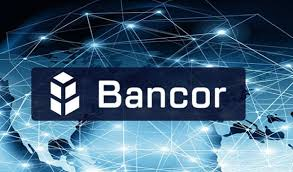
Over the past few years, we have witnessed the emergence and development of a large number of new cryptocurrencies. However, these new cryptocurrencies often face a common challenge before they are recognized by the blockchain community - liquidity. Without sufficient trading volume, new cryptocurrencies cannot be added to multiple exchanges and become difficult to circulate for holders. Even if these cryptocurrencies have real value to users or investors, they are reluctant to support cryptocurrencies that cannot ultimately be converted into Bitcoin, Ethereum, or fiat currency. The Bancor protocol was born to solve this problem.
Bancor protocol and how it works
What is the Bancor Protocol? The Bancor Protocol is a new ERC20 compatible token protocol based on the Ethereum blockchain. It aims to be an inherently tradable token through built-in functionality. The virtual currency code of the Bancor protocol is BNT. This function is simple but far-reaching: it allows one token to be endorsed by another or several tokens, and these endorsed tokens are held as reserves at a ratio of 0 to 100%. This way, the token’s price is automatically set based on its supply, reserves and ratio, without the need for a second party to be involved in the transaction.
Double demand coincidence problem
In terms of asset trading in economics, there is a classic problem called "double demand coincidence". The Bancor Protocol introduces a technological solution to this problem by using blockchain-based smart contracts and reserve currencies. This protocol allows everyone to create tokens that hold one or several other tokens as their own reserves in preset proportions. These reserve tokens can be fiat currencies, digital assets (such as gold) or other cryptocurrencies (such as Bitcoin, Ethereum, etc.).
Constant Reserve Ratio (CRR)
The Bancor protocol uses a simple mathematical formula to calculate the relationship between reserve tokens and newly created tokens and establish a unit price for the new tokens. One constant in this formula is called the Constant Reserve Ratio (CRR), which specifies that a portion of the token (between 0% and 100%) will be held as a reserve to back newly created tokens. If the CRR is set to 0%, this means that the newly created tokens are not backed by any reserve tokens. If the CRR is set to 100%, this means that this newly created token is just a "white-label" token of the reserve token. Such “intrinsically tradable tokens” use transparent mathematical formulas to generate instant liquidity regardless of trading volume.
Bancor Network Token (BNT)
Issuance and operation of BNT: Bancor will also issue its own token. It is the first token to use the Bancor protocol, called BANCOR (BNT), and it is an ERC20 compatible token. BANCOR will use Ethereum (ETH) as an endorsement and as a reserve token, and the CRR will be set and maintained at 20%. BANCOR is issued by sending ETH to the smart contract where Bancor holds reserves, and the ETH sent becomes the endorsement of BANCOR.
BNT trading and exchange: Under this setting, the user can send 20 ETH to this smart contract to purchase 100 BANCOR tokens, and the 20 ETH will be forced into the reserve by this smart contract. Using the same method, BANCOR can be redeemed back to ETH, and as long as the user sends it to Bancor's smart contract, they will receive some ETH. The Bancor protocol allows users to generate or destroy BANCOR every time they deposit or withdraw reserves (ETH).
BNT’s multi-layered relationship
The Bancor network token BANCOR can serve as the default reserve token for new currencies created with the Bancor protocol. This means BANCOR can serve as the connective tissue between all new currencies on the Bancor network. There will ultimately be a multi-layered relationship between tokens in the Bancor network. The new coin is backed by BANCOR, which is backed by ETH; thus forming a three-tier stratification between these tokens. If the price of ETH rises (due to the development of the Ethereum ecosystem), the price of BANCOR will also rise (because BANCOR and its reserve token ETH maintain a constant reserve ratio), and the rise in BANCOR's price will also cause the price of new coins to rise.
Use cases of BANCOR: Local currency: Using Bancor smart contracts, you can design new tokens, set your own CRR, and issue your own currency, which is immediately available and has continuous liquidity.
Exchange Traded Funds (ETFs)
The Bancor protocol allows the creation of ETFs of cryptocurrency pairs and currency combinations on the Ethereum platform, with no central control and owned directly by their holders, and the CRR of these tokens is set to 100%.
Autonomous Exchange: Tokens can be held, transferred, or exchanged between any tokens at any time, with no bid-ask spread. Counterparty contract risk is eliminated and the next price decline is predictable, providing low volatility for your token.
Coin Specifications: Total Amount of Tokens: TBD More specification information will be presented soon
The Bancor Protocol successfully solves the liquidity problem of new cryptocurrencies through innovative technical solutions. As the first token to use the Bancor protocol, the BNT token not only demonstrates its powerful functionality and potential, but also provides a reference for the development of more new cryptocurrencies in the future. As blockchain technology continues to advance, we have reason to believe that the Bancor protocol and its tokens will play an increasingly important role in the future cryptocurrency market.